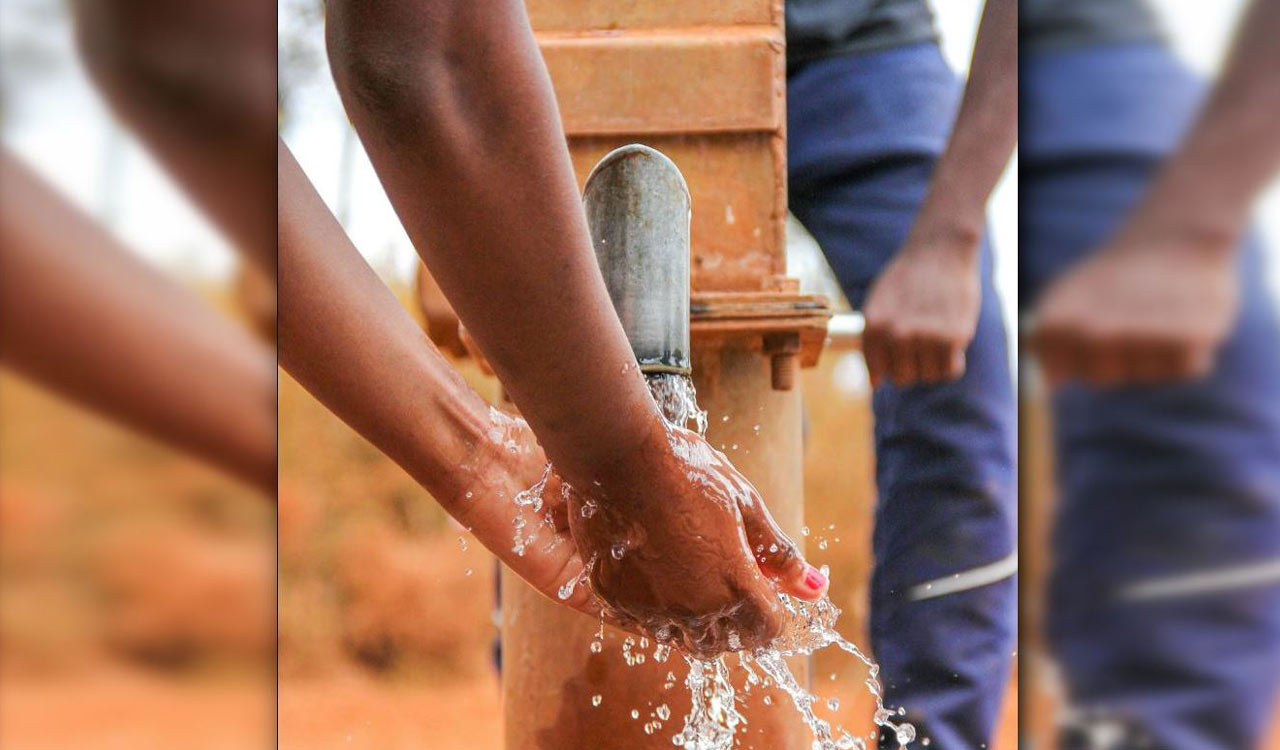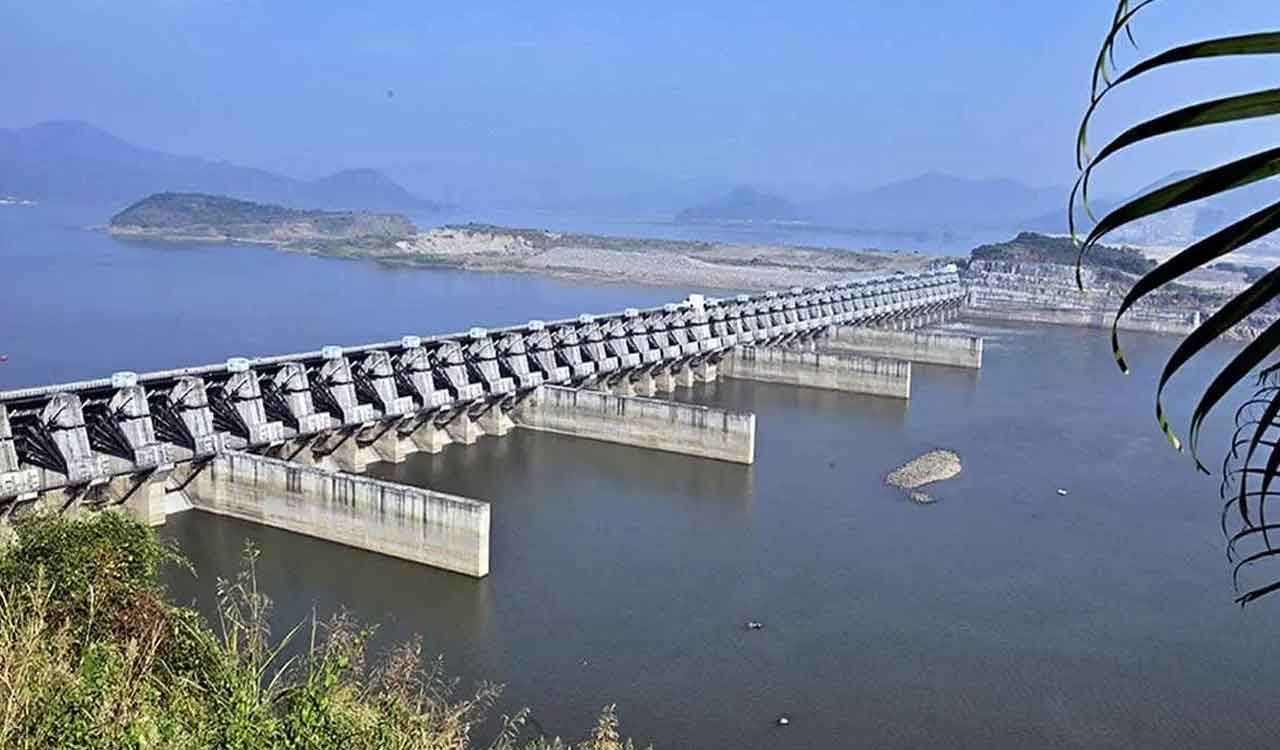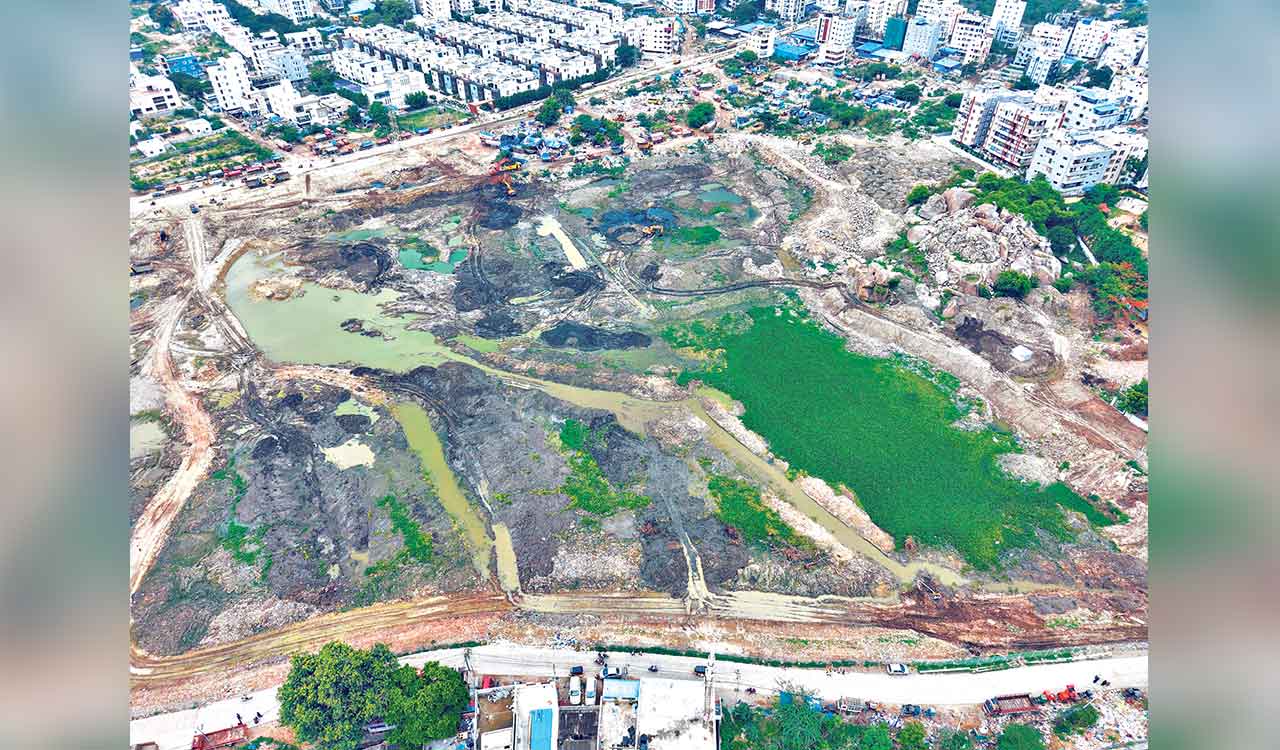Alarming levels of chemical contaminants in Telangana’s groundwater: Jal Shakti Ministry survey
A national groundwater survey by the Ministry of Jal Shakti has revealed alarming levels of fluoride and nitrate contamination across Telangana, with 28 districts affected by excess fluoride and 32 by nitrate. The findings highlight widespread pollution from agricultural and industrial sources, posing serious health risks.

Hyderabad: A national survey by the Union Ministry of Jal Shakti has exposed severe contamination in Telangana’s groundwater, with fluoride, nitrate and other chemicals exceeding safe limits in alarming proportions.
The findings, detailed in the State-specific ‘Groundwater Quality Year Book of Telangana State, 2025’, released on Saturday indicate that nearly 28 districts are plagued by excess fluoride, while nitrate levels surpass permissible thresholds in 32 out of 33 districts, making Telangana the third-worst affected State nationally for nitrate pollution.
Major sources of the contamination remain agricultural runoff and industrial effluents. Ironically, monsoon recharges are taking the pollutants deeper into aquifers. The survey, conducted by the Central Ground Water Board (CGWB) under the Ministry of Jal Shakti, represents one of India’s most extensive annual assessments of groundwater quality.
Launched as part of the Ministry’s mandate to monitor and safeguard water resources, the 2024 edition involved collecting over 25,000 samples nationwide from wells, boreholes and hand pumps used for drinking and irrigation.
In Telangana alone, the effort focused on 1,150 samples analysed for key parameters including electrical conductivity (EC), pH, fluoride, nitrate, chloride, bicarbonate, calcium, iron, arsenic and heavy metals.
Samples were gathered in two phases, pre-monsoon (typically March to May, capturing dry-season concentrations) and post-monsoon days reflecting recharge effects.
The samples were tested at accredited laboratories, including the National Institute of Hydrology’s facility in Hyderabad, using standardized methods aligned with Bureau of Indian Standards (BIS) guidelines.
Even the fluoride levels worsened in six of nine Hyderabad sites. This ‘pollution push’ occurs as heavy rains infiltrate surface pollutants, such as agricultural nitrates from fertilisers and urban sewage, directly into shallow aquifers, accelerating leaching of salts, minerals and residues.
Nationally, the report flags a 2.27% rise in fluoride-affected areas since 2022, but Telangana’s escalation is acute.
Fluoride exceedances jumped significantly between 2017 and 2024, with 14.8% of samples now surpassing the BIS permissible limit of 1.5 mg/L and the desirable safe limit of 1.0 mg/L.
District-wise, the contamination paints a dire picture. Nalgonda, infamous for fluorosis hotspots, remains impacted, but the crisis has spread recently. Pre-monsoon excess fluoride (>;1.0 mg/L) was detected in Nagarkurnool, Rangareddy, Yadadri Bhongir, Jangaon, Warangal, Hanamkonda, Hyderabad, Medchal Malkajgiri and Nalgonda. Overall hotspots include Hanamkonda, Warangal, Jagtial, Jangaon, Nagarkurnool, Karimnagar, Khammam, Rangareddy and Nalgonda, spanning 28 of 33 districts.
In Hyderabad, even urban borewells showed post-monsoon spikes, with three sites deteriorating sharply.
Nitrate, exceeding the 45 mg/L BIS limit in 27.48% of Telangana samples (third-highest nationally after Rajasthan and Karnataka), affects 32 districts uniformly, driven by nitrogen-based fertilisers in intensive farming. Chloride levels, while not as prominently detailed, follow bicarbonate as the second-most prevalent issue statewide, contributing to overall salinity.
High concentrations were implied in arid zones like Gadwal (Jogulamba Gadwal district). Other chemicals, such as calcium and bicarbonate from irrigation runoff, dominate, with elevated calcium linked to widespread kidney stones and urinary tract disorders.
Related News
-
Chandrababu Naidu opposes Telangana projects on Krishna again
-
Telangana warns Centre again on AP’s Banakacherla project; flags ecological threat
-
Diarrhea outbreak in Kamareddy village, Harish Rao blames water contamination in Demikalan
-
Contaminated water from Sunnam Cheruvu poses health risks, says PCB report
-
Top seeds Chotrani and Suraj ease into Western India Squash quarterfinals at CCI
1 hour ago -
Travis Head’s unbeaten 142 puts Australia in control of Ashes 3rd Test
1 hour ago -
Bangladesh: Funeral of youth leader Sharif Osman Hadi to be held in Dhaka under tight security
1 hour ago -
India to face Pakistan in U19 Asia Cup final after semi-final win
1 hour ago -
India wrap up year with commanding T20I victory against South Africa
1 hour ago -
Roongta Cinemas opens first South India multiplex in Hyderabad
2 hours ago -
Dhakshineswar Suresh stuns Medvedev to take Kites into WTL final
2 hours ago -
Satwik-Chirag create history by reaching semifinals of BWF World Tour Finals
2 hours ago




